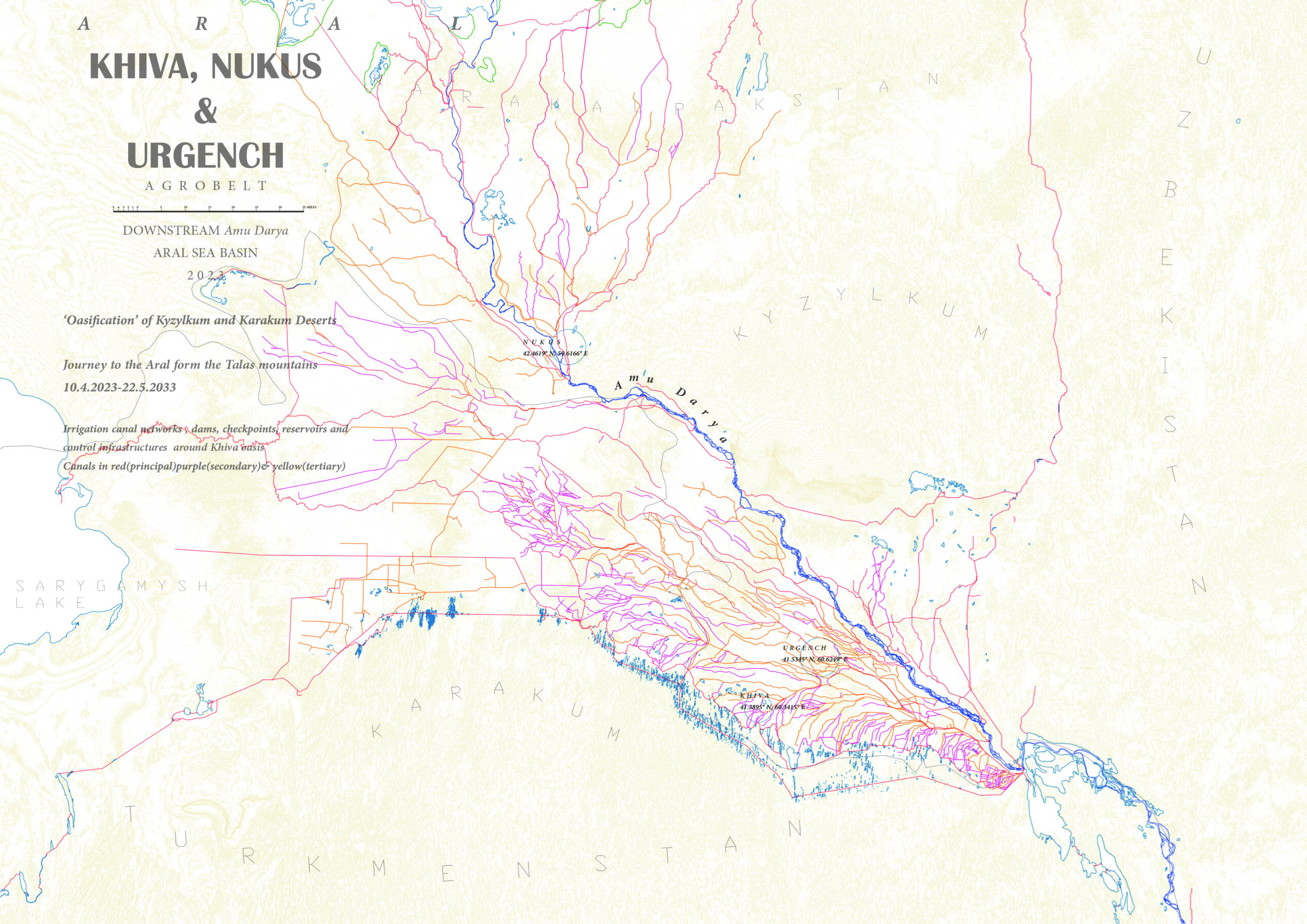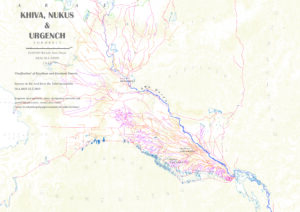

Oasification of the desert: The Agrobelt around Khiva leads to Nukus-the mouth of the Amu Darya. Sandwiched between two deserts in the steppes the river water is diverted to irrigate deserts for agriculture; a glimpse of Stalinst legacy -a geophysical force. (Image and caption credit: Arijit Chatterjee)
The 2021-22 theme of “Disruption,” challenged contenders to explore how architecture, in light of the ongoing climate crisis, might help to chart new paths and implement far-reaching solutions.
Arijit Chatterjee’s proposal, “Mapping the mind of the river: Architecture as a loss of control,” was chosen from a field of nearly 50 applicants from a dozen nations around the world. His research, currently underway, explores how engineered environmental systems strategically shape the distributions of natural resources as well as the reparative potential of both human and non-human adaptations. His project and travel are structured so as to address the following research questions:
How do we read the mind of a river as emblematic of broader balance or imbalance within nature, society and culture?
How histories of human, more-than-human adaptations of fluvial systems record temporal imprints as residue within landscapes in the intersection of earth processes and extractive cultural practices?

Traces of Muslin: Weaving Muslin stopped as the British East India Company erased every trace of the historic craft. Making muslin is a woven craft with moisture and microclimates of specific rivers in the Bengal delta. Cotton sample with guti from Phuti Karpash(Gossypium arboretum); leaves and cotton ball collected at the Department of Botany, University of Rajshahi. Study of leaf, cotton ball, flower, seedling and mature tree found to match the century old characteristics of the lost tree, rivers and craft. (Image and caption credit: Arijit Chatterjee)
As of June 2023, Chatterjee has investigated river systems across The Ganges-Brahmaputra-Meghna basin in south Asia and The Aral Sea basin, Syr Darya and Amu Darya rivers in Central Asia. In the Padma, Meghna basin, Bangladesh, the lost craft of muslin weaving and the disrupted migration of anadromous Hilsa river systems were scrutinized through the lens of woven climates around rivers. In central Asia the study of historical regimes of farming and extensive irrigation of Syr Darya and Amu Darya rivers across Kyrgyzstan, Kazakhstan and Uzbekistan led Chatterjee to travel on land from the Talas mountains, across the dry bed of the Aral Sea recording infrastructures of control and legacies of oasification.

Long Time no Sea: 18th May 2023- Arriving at the Yurt camp on the shores of the South Aral Sea, Karakalpakstan, Uzbekistan. (Image and caption credit: Arijit Chatterjee)
Arijit has travelled over 11, 000 km over land and water and is currently travelling in the Fergana valley, Uzbekistan with travels planned in Jutland, Denmark, the Yellow river around Zhengzhou, China and finally climbing the mount Chimborazo in Ecuador during 2023. He will be developing a “Handbook of Repair,” documenting conditions, indigenous practices, and proposing a range of interventions.